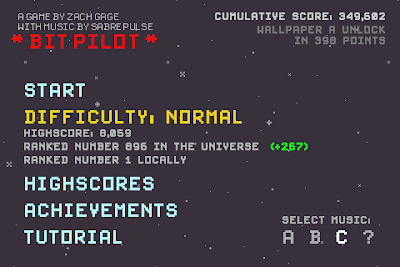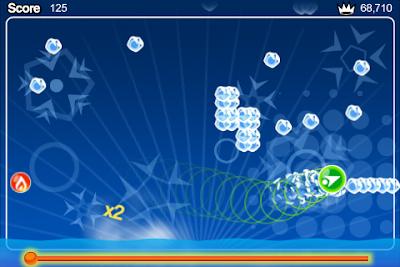
Friday, August 27, 2010
Game Review - Bit Pilot

Game Review - Tilt to Live

Game Review - MiniSquadron
MiniSquadron - $2.99 (Appshopper link)
MiniSquadron SE - Free + DLC (Appshopper link)
Every time I do a game review I grapple with the problem of what to mention and what not to mention. If I go into too much detail, I risk making the reader feel lost because he or she hasn't played the game yet. There's so much about MiniSquadron and its followup that it's hard to cover all of it without being too long-winded or overly detailed. So this time I shall endeavor to do this review in fewer than 8 paragraphs.
MiniSquadron is a great "pick up and play" game that you can turn on when you have a few minutes to kill, yet has a ton of neat things that will keep you coming back for more on your next break. You control an airplane, and your goal is to destroy all the other planes that show up in order to advance to the next wave. Visually, MiniSquadron is a cartoony 2-D side-view game with colorful and varied settings. Each area, which features 12 waves of enemies, has a unique theme, such as Face Land, whose background is littered with Moai heads from Easter Island, or Sunset Lagoon, which has a brilliant red-orange backdrop.
Like many other wave-based games, your goal is to survive 12 waves in each area and get the highest score possible. What's neat about the scoring though, is that you're not trying for a high score just to get a high score. There are certain goals to meet, and if you meet them, you unlock new planes. For example, a particular plane may be unlocked if you get 30,000 pts by the time you finish Wave 5 in Face Land. There are 56 different planes in all, and each has its strengths, weaknesses, and quirks.
Each plane also has a certain weapon type. There are 7 weapon types in all: Cannon (your standard bullets), Double Cannon, Triple Cannon, Homing Missile, Cluster Bomb, Drop Bomb, and Laser. Dividing 56 by 7, you get 8, meaning that 8 planes have a cannon, 8 planes have a double cannon, 8 planes have a laser, and so on. But not all planes are the same, even if they have the same weapon. Some may be faster but have weaker armor so you die faster. Others may be slow-moving and not very quick to turn, but have near-impenetrable armor. Finally, most of the ships have interesting and/or funny names that the creators, Studio FungFung, obviously had a lot of fun thinking up.
To make things even more interesting, powerups fall from the sky in the form of different colored stars. Powerups can make you faster, slower, invincible, invisible, shoot a burst of homing missiles, call in an airstrike, shoot a ginormous laser, or just give you extra points. Sometimes a Heart will appear, giving you an extra life. The kicker is that these hearts and stars can also be taken by enemy planes. The heart doesn't do anything for enemies, but the other powerups do, and you'll be at a disadvantage if, say, the enemy gets the Airstrike power.
I played MiniSquadron like crazy and managed to unlock all planes except the last one, which requires completing the last wave of the last area with a crazy high score. I haven't been able to complete it at all, much less get the high score. I will someday, though.
MiniSquadron is currently $2.99, and if you have half as much fun as I did, it's worth it. If you're not sure, you can download MiniSquadron SE, which contains the first 2 levels for free, and the other 6 as 3 separate $.99 download packs. I should note that MiniSquadron SE is a different game, with a new set of 56 planes and all-new areas, weapons, and powerups.
There! 8 paragraphs! For a buttload of screenshots, visit my Picasa web album.









